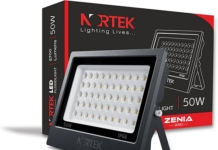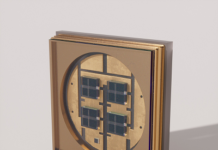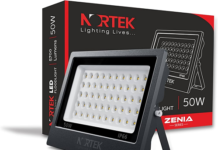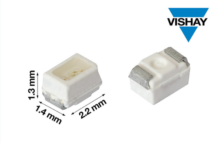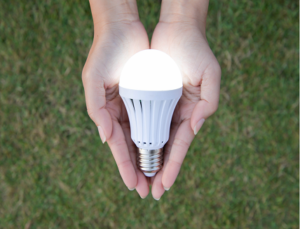
In 2020, the US residential sector used 62 billion kWh of electricity for lighting alone. That’s about 4% of all the electricity used by US households that year.
Now, 4% seems small, but 62 billion kWh a year isn’t. For comparison, it takes about 70 billion kWh a year to run and sustain the Internet.
Light-emitting diode (LED) technology prevents much of that energy from getting used.
Ready to learn more about the top benefits of LED lights, and why should you make the switch as soon as possible? Then be sure to read on as we rounded up all the good things that LED can do for you, your home, and the environment.
Consumes the Least Energy
Incandescent light bulbs convert 90% of the energy they receive into heat. They only turn 10% of the electricity that flows into them into actual light.
Compact fluorescent bulbs, in turn, transform up to 85% of energy into light.
However, LED lights are still the winner, as they convert up to 90% of the energy they consume into light. They then emit the remaining 10% as heat.
That means LEDs use the least amount of energy to provide you with bright lighting. LED technology is, in fact, the most energy-efficient lighting you can find today.
Can Give You Thousands of Hours of Life
LED lights can last for at least 11,000 hours before they burn out. If you use them for only 5 hours a day, they can last for about six years.
By contrast, incandescent bulbs have an average service life of only 1,000 hours. So, LED lights last at least 10 times longer than traditional incandescent bulbs.
That longer lifespan also translates to reduced demand for raw materials. Because LED lights last longer, you won’t have to keep replacing them and throwing out dead bulbs. So, in a way, LED lights also help combat the ever-growing problem of waste accumulation.
Reduced Energy Usage Translates To Lower Energy Bills
According to recent data, the average monthly home electric bill in the US amounts to $117.65. If 5% of that is for lighting, it equates to a monthly cost of $17.65 for simply illuminating a home. That translates to a staggering $211.80 expenditure for lighting alone.
Homeowners who still rely on dated light bulbs, such as incandescent lights, are sure to pay even more. The thing is, inefficient bulbs are still in some 1.5 billion sockets in US buildings.
Now, keep in mind that energy efficiency is one of the chief advantages of LED lights. The less energy your lightbulbs use, the lower your energy bills would get, too. If you switched out all your incandescent bulbs with LED, you could save at least 80% on your lighting costs.
LED lights don’t add a lot of heat energy to your indoor ambient environment, either. Incandescent bulbs do the opposite, as they release the energy they convert to heat into the air. You might not feel that warmth, but it can still add heat to your home’s indoor environment.
Lower Carbon Footprint
Electricity production is the second-biggest source of greenhouse gases (GHGs) in the US. In 2019, a quarter of all GHGs generated in the US came from producing electricity.
Carbon dioxide (CO2), in turn, is one of the primary components of GHGs. CO2, together with other GHGs, traps heat in the earth’s atmosphere, causing the planet to warm up. This is why GHGs are a principal contributor to global warming.
A huge reason to cut your carbon footprint is that global warming worsens disasters. For starters, it can cause heavier storms, longer droughts, and extreme heatwaves. It can also make wet areas become wetter and dehydrated areas even drier.
There’s still some good news, though. Every kWh reduction in your electricity use can keep about one pound of CO2 away from the atmosphere. This is a feat you can achieve with LED’s energy efficiency.
Fewer GHGs Equate To Healthier Air
The burning of fossil fuels for electricity production creates many noxious gases. Aside from CO2, there’s also carbon monoxide (CO), nitrogen oxide (NOx), and sulfur dioxide (SO2). All these contribute to air pollution, which causes seven million deaths each year.
Experts say these fatalities are a result of long-term exposure to air pollutants. Breathing in unhealthy air can give rise to conditions like stroke and heart disease. Many people also develop lung problems, such as acute infections and even lung cancer.
All that should be enough reason for you to reconsider your electricity usage. Switching to LED lights is one of the easiest ways to cut your energy use. In doing so, you can lower your GHG production, which can then help combat air pollution.
Help Enhance Your Home’s Safety
According to the folks at Ellumiglow, LED light strips can help boost safety at home. For starters, they are an economical option to illuminate walkways and staircases. You can also install them along hallways and use them to boost your exterior lighting.
Adequate path lighting, especially the stairs, can help prevent slips, trips, and falls. Stair accidents are prevalent in homes, especially those with kids and older adults. In fact, they cause injuries severe enough to land at least a million people in emergency rooms each year.
Start Reaping the Benefits of LED Lights by Making the Switch Today
As you can see, there are many benefits of LED lights that go beyond saving on lighting costs. Their superb energy efficiency puts less strain on your wallet and the environment. Plus, they can make your home safer by ensuring you always have adequate light.
So, as early as now, consider swapping out your older, inefficient bulbs with LED ones. The sooner you do, the sooner you can enjoy its cost-saving and health benefits.
Interested in more educational articles like this? Then be sure to check out our other news and blog posts on electronics and technology!




